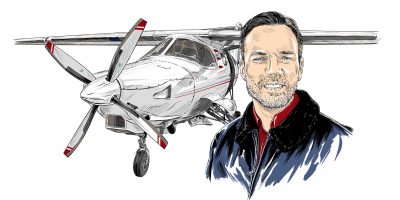Back in early March, while the world and aviation entered a rather dark hour, a small piece of good news for GA slipped out almost unnoticed. The regulations to support the EASA Basic Instrument Rating (the ‘BIR’) were finally published, more than four years after the associated rule-making task first convened.
The BIR was conceived as part of a package of measures to improve access to IFR flying for GA pilots – an aim originally identified by EASA at the 2014 Safety Conference in Rome. The regulations do not enter legal effect until September 2021, but getting them across the line was a significant achievement.
Also alongside the BIR are other updates to the Aircrew Regulation, including extending the provision which allows IMC ratings (issued as the IR(R)) to be added to EASA licences. The extension is also until September next year, although that will likely become a moot point at the end of 2020 if the UK leaves EASA as anticipated.
“BIR training will be split into three simple modules – core instrument flying, approach and departure skills, and en route IFR“
The BIR is designed to provide a more obtainable IFR qualification for GA pilots that should bring most of the utility of the normal Instrument Rating, but with less theoretical knowledge and a more flexible training regime. There are no minimum hours required for the rating – it is entirely ‘competency based’. Being an EASA rating, it will be valid in all EASA Member States.
A key difference from the IMC rating is that the BIR will have almost all the privileges of the full IR. There are no restrictions in terms of class of airspace and only moderate additional limitations to weather minima. Approach minima is 200ft above normal, and departures need a 600ft cloud ceiling and 1500m visibility. Destination forecasts must meet similar criteria to commence a flight.
Simple flight planning
For the nature and frequency of flights conducted by most GA pilots, approaches flown in IMC to minima are likely to be few and far between, so I suspect in practice there will be little difference in utility versus the full IR. With access to all classes of controlled airspace under IFR, the BIR supports one of the key benefits of flying IFR – that of simple flight planning and end-to-end ATC clearances.
EASA’s encouragement of GA IFR is to be welcomed. Although some GA pilots will have no interest in IFR flight, evidence from the US suggests if ratings were more accessible there would be more uptake.
Recent FAA stats suggest around a quarter of US private pilots hold an IR (although it’s not known how many are active). What is interesting is that the FAA reckon that the proportion with an IR has risen considerably since 1980 when it was only around one in ten.
Both the US and Europe show long term declines in new PPLs being issued, but the IR stat is an interesting one – in the UK the number of IRs added to an EASA PPL(A) was all of 66 in the last counting period available, April 2018 to March 2019. This compared to 1,736 new EASA PPL(A)s issued overall. Even the IMC rating (including IR(R)) was down to around 200 in the same period. Go back to the 1990s and in a good year the CAA might issue nearly 1,000.
The introduction of the ‘competency based modular’ (CBM) route to the IR in 2014 has increased IR uptake among PPL(A)s slightly. In 2013, the year before it came in, a mere 29 IRs were issued to PPL holders, so 2019 does represent a small increase.
So why might the BIR improve things? It is often said that PPL holders are put off by the volume of theoretical knowledge (TK) needed to obtain the IR. The CBM route for the IR did reduce the TK, but it still requires a formal groundschool course, seven exams and a big commitment of time and money. Although the IMC rating has always been popular with GA pilots, being UK only and the lack of access to en route controlled airspace may have limited its perceived utility.
The BIR will hopefully forge a middle path on the issue. Practical training will be split into three simple modules consisting of core instrument flying, approach and departure procedures and finally en route IFR which should tie the skills together such that a pilot can plan and execute an end-to-end IFR flight.
There are no minimum hours requirements, so instructors and flying schools will have to judge that all competencies have been acquired before recommending for a test. There will be three ground exams, one per module (the CBM IR is seven), although multiple subjects will be covered in single papers – for example, questions on Met might find themselves next to radio procedures.
With the regulations not entering into force for another year, this does raise the issue of how the BIR intersects with Brexit. Individual pilots wishing to gain EASA ratings post the transitional period do have the option of obtaining an EASA licence from another state, for example Ireland.
Currently the plan is to implement the BIR in UK law, so when the UK leaves EASA there will be a parallel UK version in place. However, because it may not be considered an ICAO Annex 1 rating (due to the modifications from the standard IR), unless the UK can do a bilateral agreement with Europe, UK BIR holders may find themselves limited to the UK.




